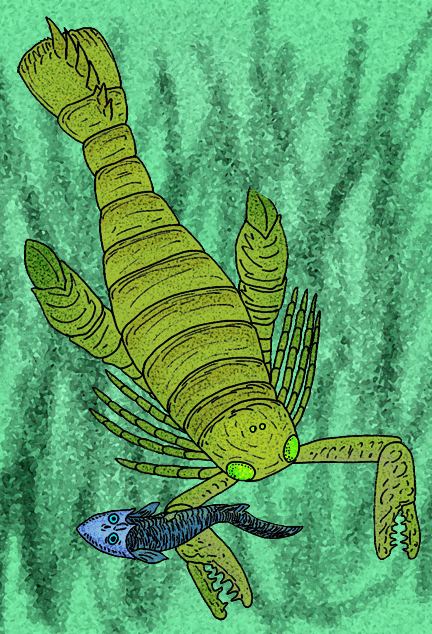Suborder †Eurypterina Phylum Arthropoda Rank Family | Higher classification Pterygotioidea Order Eurypterid | |
 | ||
Similar Eurypterid, Acutiramus, Pterygotus, Arthropod, Chelicerata | ||
Pterygotidae are an extinct family of eurypterids. They were members of the superfamily Pterygotioidea, and were the only eurypterids to have a truly worldwide distribution, and include the largest arthropods to have ever lived.
Contents
Description
Pterygotidae, which lived from the late Early Silurian to the Middle Devonian, were characterized by small to large exoskeletons with semilunar scales. The telson, (tail) was expanded, or flatter than it was tall. Pterygotidae also had chelicerae (claws in front of the mouth) that were large and long, with strong, well developed teeth on the claws. Their walking legs were small and slender, without spines. They were the largest arthropods to have ever lived; the largest described fragments shows individuals up to 540 cm in length. Some of the pterygotids had reasonable binocular vision and chelicerae adapted for cutting or crushing, making them some of the most formidable predators of the Paleozoic. Others had poor eyesight and chelicerae more adapted to slicing, and so, most likely either scavenged or fed on soft-bodied organisms.
Genera
Phylogeny
The genus Slimonia is thought to represent the sister group to the pterygotids. Although the clade Pterygotidae is one of the best supported within the Eurypterida, relationships within the clade have been difficult to resolve.
